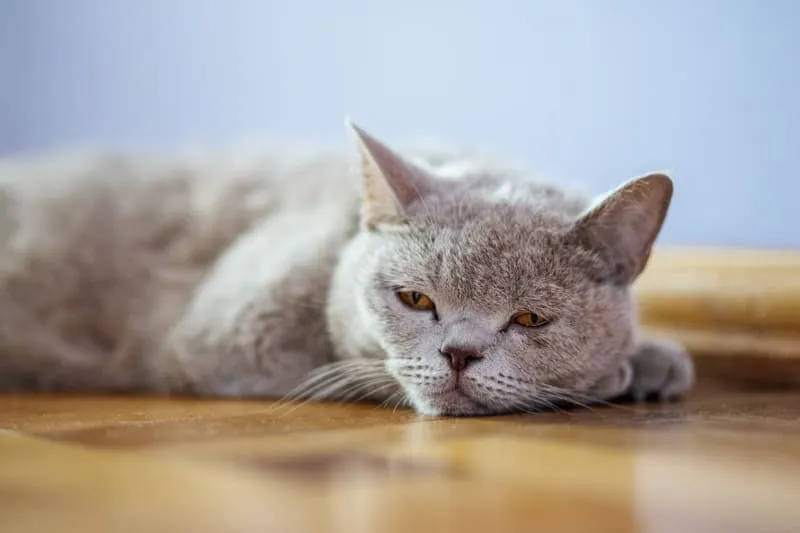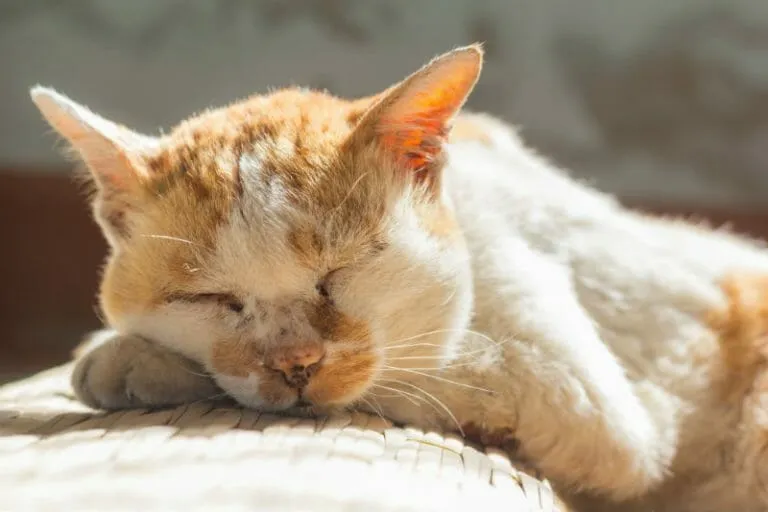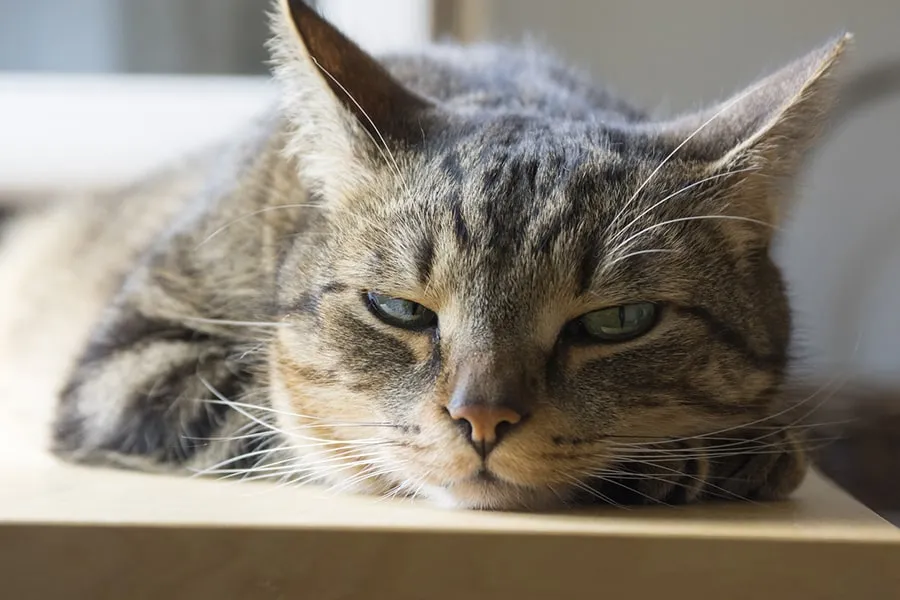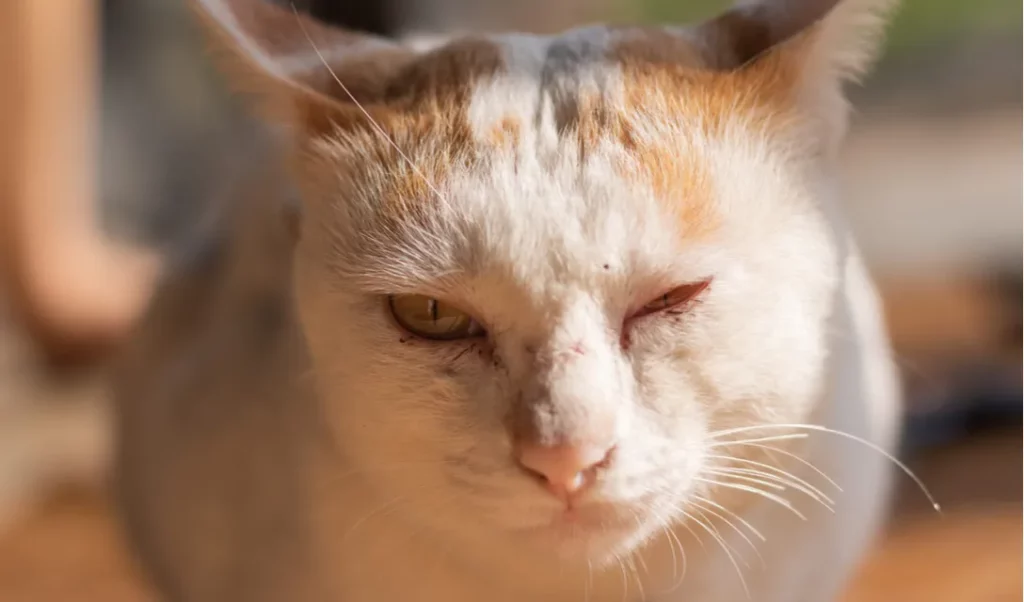Are you a cat owner who is noticing some signs that your cat’s eyes are infected? Do you want to know the various signs of allergies in cats and how to handle them? Keep reading to know the signs of allergies in cats’ eyes and how to treat them.

Allergies affecting cats’ eyes can be a distressing and discomforting experience for your feline companion.
Furthermore, eye allergies in cats, also known as allergic conjunctivitis, result from a cat’s hypersensitivity to certain allergens in their environment.
These allergens may include dust, pollen, mold, certain foods, or even contact with specific materials.
Recognizing the signs and symptoms of eye allergies in cats is crucial to promptly address and manage the condition.
While cats are generally resilient, they are susceptible to various allergies, and their eyes can be particularly sensitive to allergens.
Here, you will get to learn the seven prominent signs of eye allergies in cats.
Signs of Allergies in Cats Eyes Treatment

To know if your cat has allergies that affect their eyes, here are signs you should take note of:
1. Excessive Tearing and Discharge From the Eyes
One of the primary signs of eye allergies in cats is an increase in tear production and eye discharge.
Also, this occurs as the cat’s immune system reacts to allergens, causing the eyes to release more tears as a protective mechanism.
Treatment for this symptom might involve regular cleaning of the eyes and removal of discharge using a clean, damp cloth.
In some cases, your veterinarian might prescribe ophthalmic solutions to alleviate the tearing and discharge.
2. Redness and Swelling of the Eyes
Allergic reactions often cause redness and swelling in a cat’s eyes due to inflammation from the allergen.
Treatment can involve identifying and eliminating the allergen from the cat’s environment whenever possible.
Furthermore, antihistamines or anti-inflammatory medications prescribed by a veterinarian can help reduce redness and swelling.
In severe cases, corticosteroids might be used, but they should be administered under close veterinary supervision.
3. Squinting or Blinking Frequently
Cats with eye allergies may squint or blink more frequently to reduce discomfort or protect their eyes from further irritation.
Treating it includes changes in the cat’s environment or diet, as well as the use of antihistamines or other allergy medications as recommended by a veterinarian.
4. Rubbing or Pawing at Eyes
Frequent rubbing or pawing at the eyes is a common sign of eye allergies in cats.
It’s essential to discourage this behavior to prevent injury to the eyes.
Soft e-collars or gentle restraints can be used to minimize contact with the eyes.
Addressing the underlying allergy is key, and your vet can recommend appropriate treatments.
5. Change in the Eye Color of Your Cat
Eye allergies can sometimes cause a change in the color of the inner eye lining due to inflammation.
Identifying and eliminating the allergen is crucial for your cat’s health and well-being.
A vet may prescribe anti-inflammatory medications to help reduce the color change and inflammation.
6. Visibility of the Cat’s Third Eyelid
When a cat’s third eyelid becomes visible or partially covers the eye due to allergies, it’s an indicator of discomfort and potential eye irritation.
To treat this, Anti-inflammatory medications or eye drops may be recommended by a veterinarian to reduce the visibility of the third eyelid and provide relief.
7. Cat Being Sensitive to Light
Cats with eye allergies might display sensitivity to light, seeking darker areas to reduce eye discomfort.
Also, reducing exposure to bright light sources and keeping the cat in a dimly lit environment can help.
Your veterinarian can also guide managing light sensitivity.
Treatment and Management of Cat Eye Allergies

Early identification and appropriate management of eye allergies in cats are crucial to alleviate discomfort and prevent potential complications.
Here are some effective strategies for treating and managing cat eye allergies:
1. Veterinary Consultation
Seeking professional veterinary guidance is the primary step in managing feline eye allergies.
A veterinarian can accurately diagnose the condition and recommend an appropriate treatment plan.
2. Allergen Identification and Management
Identifying and minimizing exposure to potential allergens in cats is vital.
Implementing measures such as regular cleaning, using air purifiers, and removing or reducing contact with known allergens can significantly help manage eye allergies in cats.
3. Medication and Treatment
Veterinarians may prescribe eye drops, ointments, or oral medications to alleviate the symptoms of eye allergies in cats.
Also, these medications could include antihistamines, anti-inflammatories, or antibiotics to address secondary infections.
4. Environmental Modifications
Creating a cat-friendly environment that minimizes exposure to potential allergens can significantly reduce the recurrence of eye allergies.
Regular cleaning, minimizing dust, and using hypoallergenic products can aid in managing the condition.
In conclusion, recognizing these signs of eye allergies in cats and seeking prompt veterinary care are essential for proper treatment.
Treatment involves addressing the underlying allergy, minimizing exposure to allergens, and using medications as recommended by a veterinarian to alleviate discomfort and inflammation in the eyes.
Related Searches:
